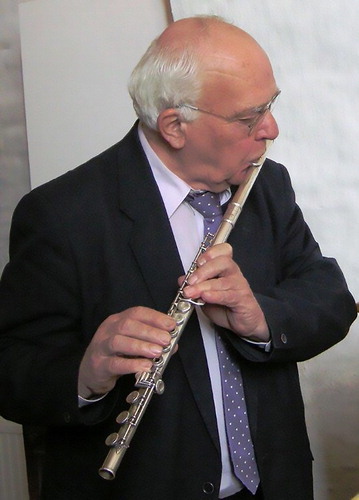Per Anker Lindgaard (born Mogensen) passed away on December 15, 2019. Lindgaard was a prominent theoretical physicist and worked for more than 40 years as the “in-house” theoretical physicist in the neutron scattering group at Risø National Laboratory. He became a joint professor at Danish Technical University (DTU) after the merger of Risø and DTU in 2006.
Per Anker graduated from Copenhagen University in 1961 with the Danish degree of magister in theoretical physics and joined Risø in 1963. In 1976, he obtained a DSc from Copenhagen University based on a dissertation on the theory of rare earth magnetism. As a young scientist, he had a 2-year tenure as a post doc at Harwell Laboratory where he worked on magnetism and critical dynamics with Walter Marshall. In 1967, they published the first observations of the phenomenon of critical slowing down near TN in terbium with Jens Als-Nielsen and O. W. Dietrich, who performed the experiments. Solid-state physics was a young, but growing, field in Denmark at the time, and Per Anker was active in a national study group, where themes like van Hove Formalism, and later, scaling theory, were explored.
In 1971, Per Anker Lindgaard acted as host for Walter Marshall and Stephen Lovesey while they finished their seminal book, Theory of Thermal Neutron Scattering, over several months at Risø National Laboratory. Throughout the 1970s and ‘80s, Per Anker authored numerous publications on the theory of magnetism in rare earth metals, and enjoyed close collaborations with visiting scholars like A. Kowalska, J.F. Cooke, A. J. Freeman, B. Harmon and P. Laut. The works were centered on studies of exchange interactions, magnetic structures, and dynamics, as well as phase transitions and critical phenomena. He has also been a visiting scientist at numerous institutions both in Europe and the USA.
In 1988, he published the first theoretical papers on adiabatic nuclear magnetic ordering in copper. This provided a theoretical explanation of the ordering at nanoKelvin degrees that was observed in experiments at Risø Cold Neutron Source. The neutron experiments at Risø were carried out as a joint effort with the O. Lounasma (Helsinki) group, and the M. Steiner (HMI, Berlin) group with A J. Annila, A.S. Oja, K. Siemensmeyer and K. N. Clausen as lead investigators.
In the 1990s, Per Anker made important contributions to the theory of ordering in magnetic clusters and models for magnetism in high-temperature superconductors. In the same period, he turned his attention to studies of the confirmation of bio-polymers and homology measures for protein fold classes. In a pioneering paper with Henrik Bohr, they found a mechanism for formation of domains containing magic numbers of secondary structures, and super-structures of such domains.
He was active in professional societies such as the Danish Physical Society, European Physical Society, and the International Union of Pure and Applied Physics, as well as engaged in public lectures for broader audiences. As a board member in European Physical Society, he was instrumental in the formation of a new division on Physics in Life Sciences.
Music was important in Per Anker’s life and he played the flute as a very able amateur. In his later years he had more time to perform at chamber music events and church concerts.
Riso National Laboratory, Denmark Jørgen Kjems
Riso National Laboratory, Denmark

